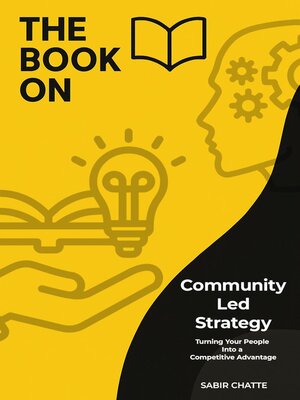
Sign up to save your library
With an OverDrive account, you can save your favorite libraries for at-a-glance information about availability. Find out more about OverDrive accounts.
Find this title in Libby, the library reading app by OverDrive.



Search for a digital library with this title
Title found at these libraries:
| Library Name | Distance |
|---|---|
| Loading... |
The Book on Community-Led Strategy: Turning Your People Into a Competitive Advantage
by Sabir Chatte
In a world where marketing channels get noisier, product features are copied overnight, and trust in institutions continues to erode, one question grows more urgent for modern organizations:
What makes people stay?
This book offers a clear, grounded answer: belonging.
The Book on Community-Led Strategy is a comprehensive, deeply human guide to building communities not as side projects, but as strategic engines for long-term growth, retention, innovation, and culture. Written for founders, strategists, operators, and community builders, this is a playbook for anyone who believes that the future of business will be shaped not just by what we sell—but by who we gather and how we gather them.
Over the last decade, community has gone from buzzword to business function. But most teams still don't know how to move beyond vague engagement goals or isolated forums. This book offers the missing structure: a complete narrative and strategic framework for understanding, designing, and sustaining a truly community-led organization.
Inside, you'll discover:
Each chapter unfolds as a blend of strategic insight and storytelling. Rather than relying on bullet points or jargon-heavy templates, the book invites you into a narrative of practice—what it actually looks like to build and nurture communities that are alive, durable, and strategically aligned.
This is not a hype-filled manifesto. It's a careful, emotionally intelligent guide written by someone who has spent 25 years advising teams at every stage—from pre-seed startups to global platforms—on how to turn community from a vague aspiration into a strategic advantage.
Whether you're a head of community designing your operating model, a founder trying to build early trust loops, or an executive looking to reimagine your organization's relationship to its users, this book gives you the clarity and language to do the work.
Because community isn't a department.
It's not a platform.
It's a philosophy of how value is created—with others.







